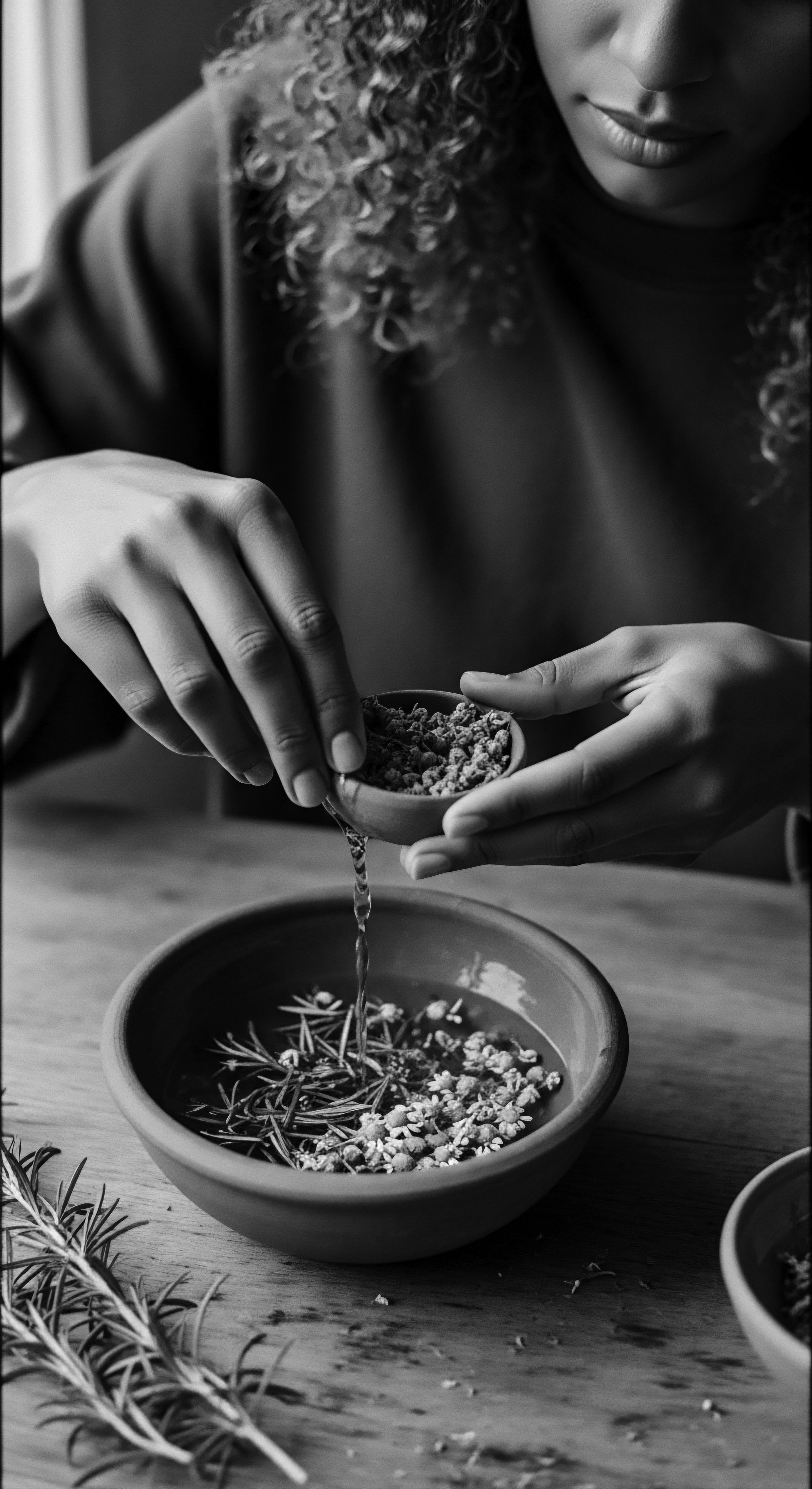
Fundamentals
The concept of High Porosity, in its most elemental sense, speaks to the very structure of the hair’s outermost layer, the cuticle. This layer, a protective sheath of overlapping scales, functions akin to shingles on a roof, dictating how readily moisture can enter or exit the hair shaft. When we speak of High Porosity, we refer to a state where these cuticular scales are significantly raised, creating an open, less tightly sealed surface. This openness allows for a rapid absorption of water, oils, and conditioning agents.
Simultaneously, it permits an equally swift release of that very moisture, leading to a propensity for dryness if not met with mindful care. The designation of high porosity describes this inherent structural characteristic, serving as a foundational understanding for anyone tending to textured hair.
For centuries, communities with textured hair across the globe, particularly those of African descent, have intuitively understood the challenges of moisture retention in their hair, even without the modern scientific definition of high porosity. Their ancestral practices, steeped in generations of observation and ingenuity, developed robust strategies to counter this innate characteristic. The very meaning of hair care in these traditions was, in many ways, an ancient dialogue with hair porosity, a dance between absorption and sealing. Understanding this fundamental characteristic helps explain why certain traditional remedies and rituals persist, offering profound insights into the needs of textured hair.
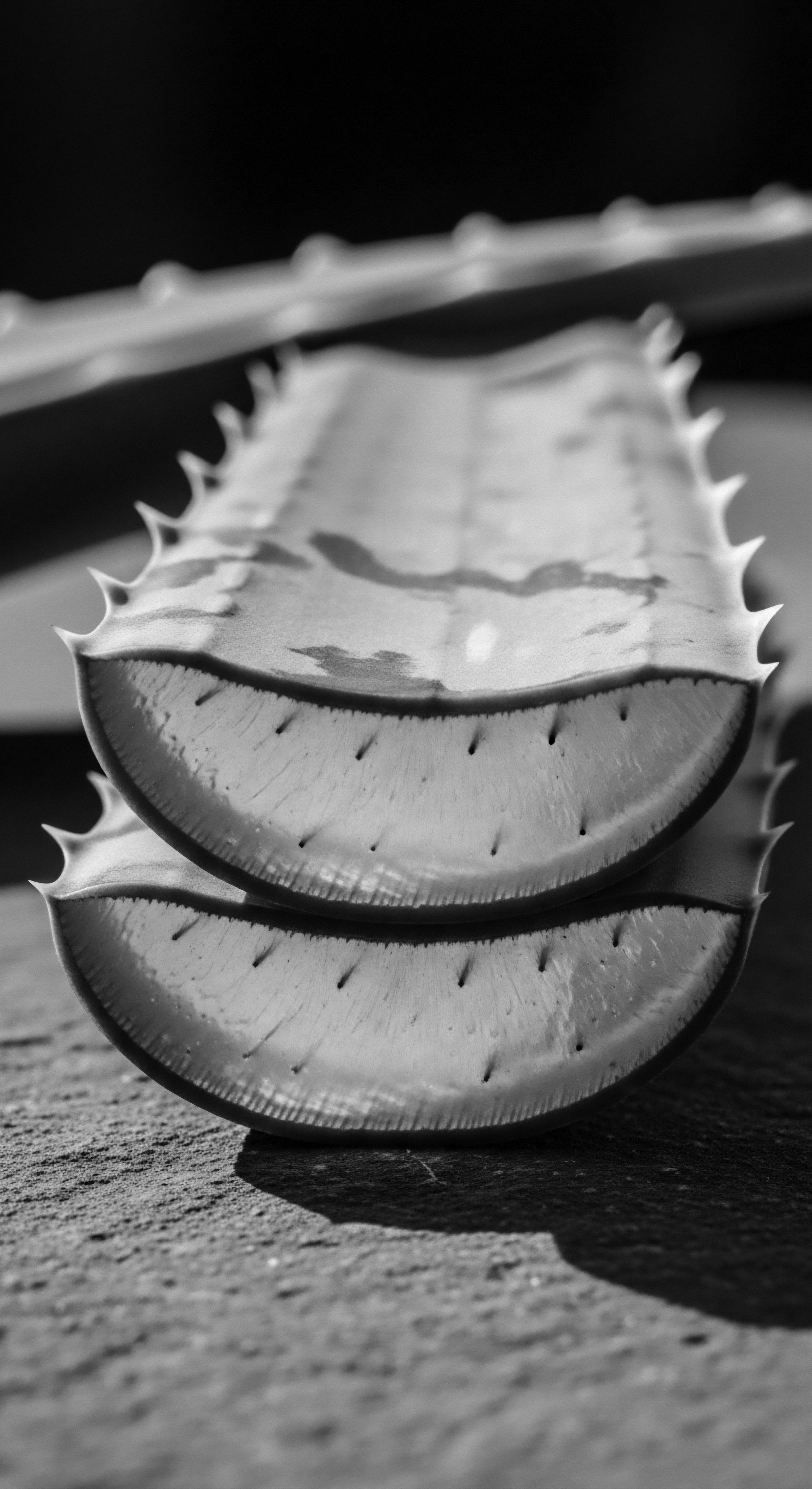
The Hair’s Protective Shield
Hair, at its core, is a protein fiber. Its external defense mechanism, the cuticle, is composed of dead, overlapping cells that form a formidable barrier. In a highly porous strand, these cuticular scales stand lifted, a testament to various influences, whether genetic inheritance or environmental interactions.
This elevated state creates a pathway for substances to traverse the hair’s outer boundary with ease. However, this same permeability also becomes a double-edged sword, as the absorbed elements often escape just as quickly as they enter.
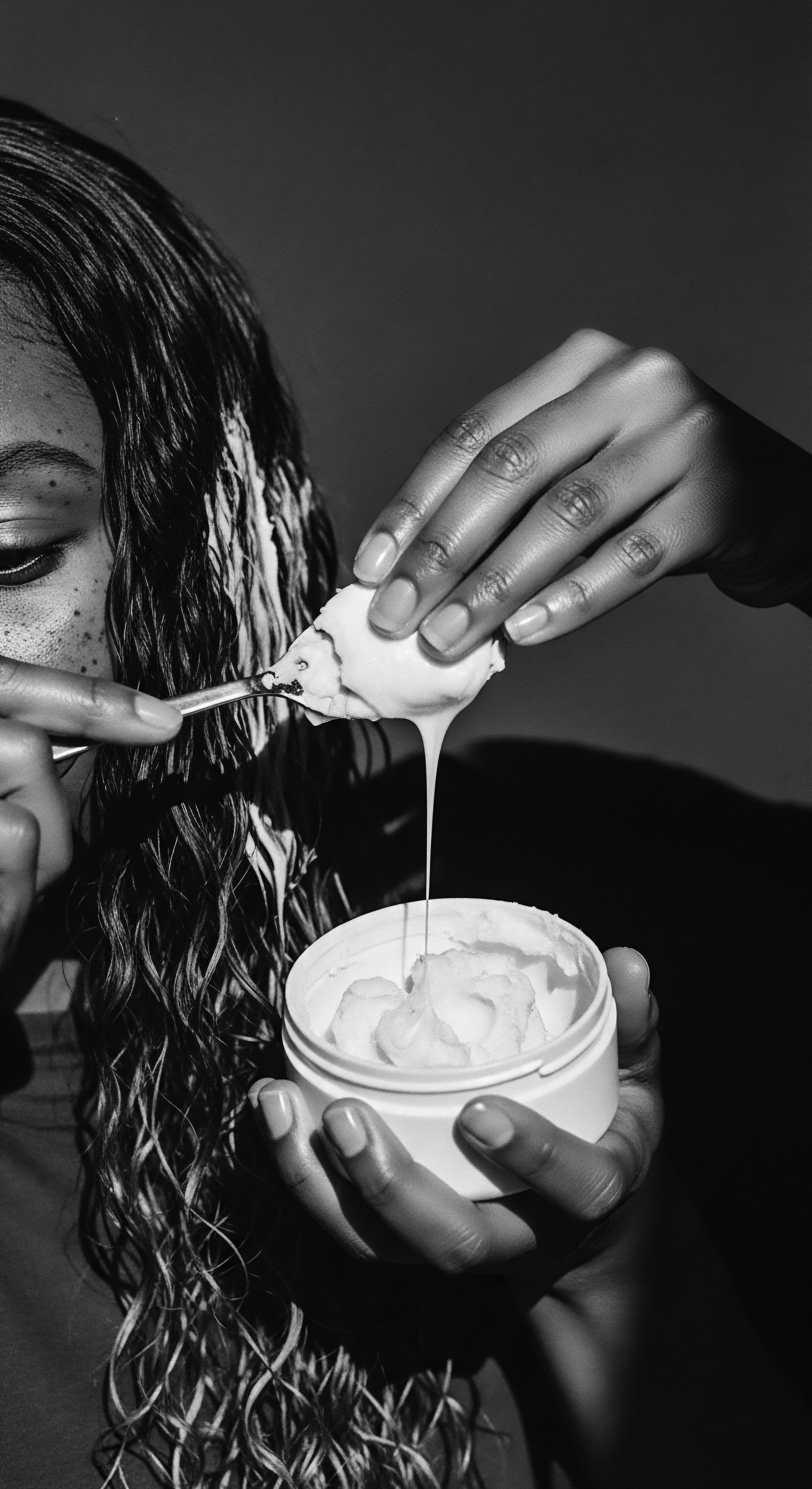
Elemental Properties of Porous Strands
- Rapid Absorption ❉ Hair with high porosity readily takes in water, making it feel saturated almost instantly upon contact with moisture.
- Swift Release ❉ Despite rapid absorption, the hair also releases moisture quickly, often leading to a sensation of persistent dryness.
- Susceptibility to Damage ❉ The open cuticles make the hair more vulnerable to external stressors, including environmental elements and harsh styling practices.
- Product Effectiveness ❉ Such hair tends to benefit greatly from products designed to seal the cuticle and provide lasting hydration.
This elemental understanding of high porosity lays the groundwork for appreciating the sophisticated methods developed by our ancestors to honor and sustain their hair. Their wisdom, passed down through oral traditions and communal practice, often mirrored what modern science now explicates as optimal care for highly porous textures.
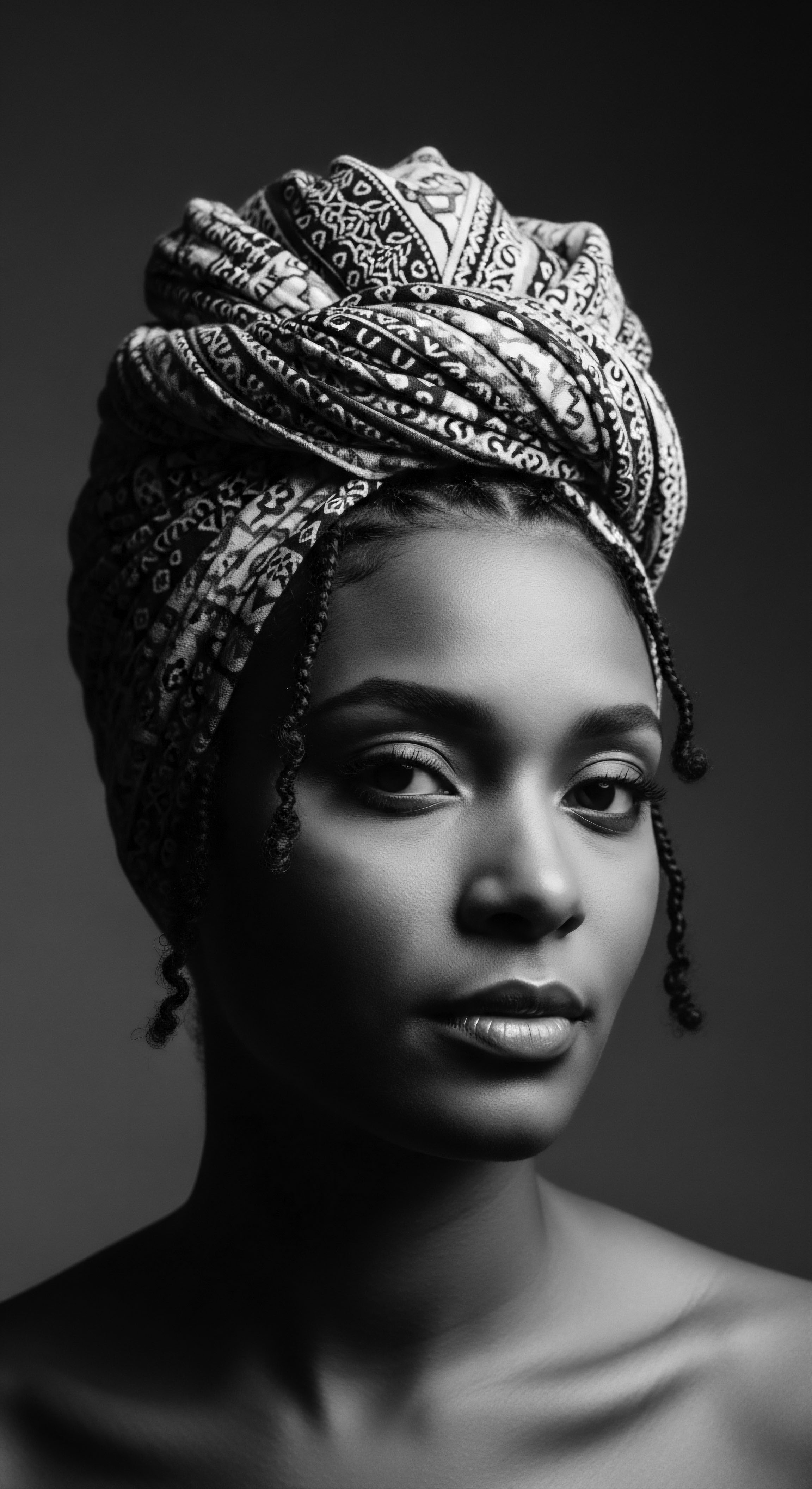
Intermediate
Delving deeper into the understanding of High Porosity reveals a more nuanced interpretation, moving beyond simple absorption to consider the intricate interplay of biological factors and historical environmental adaptations. The significance of high porosity, particularly within the context of textured hair, finds its roots in the evolutionary journey of our ancestors. It is not merely a descriptive term for a hair type; it represents a physiological inheritance, a testament to the resilience and adaptability of hair in diverse climates and conditions. This interpretation clarifies how high porosity functions on a microscopic level, affecting how hair interacts with its environment and the substances applied to it.
The very structure of Afro-textured hair, characterized by its elliptical cross-section and tight coiling, inherently presents a greater surface area where cuticular scales can lift. This natural architecture contributes to what we now identify as high porosity in many individuals of African descent. The historical context of hair care practices across the diaspora reflects a long-standing collective wisdom aimed at addressing this inherent characteristic. Understanding the physical mechanics behind high porosity allows us to truly appreciate the effectiveness and foresight of these traditional methods.
The inherent thirst of highly porous textured hair is a whispered echo from ancient lands, a call for consistent, honoring moisture.
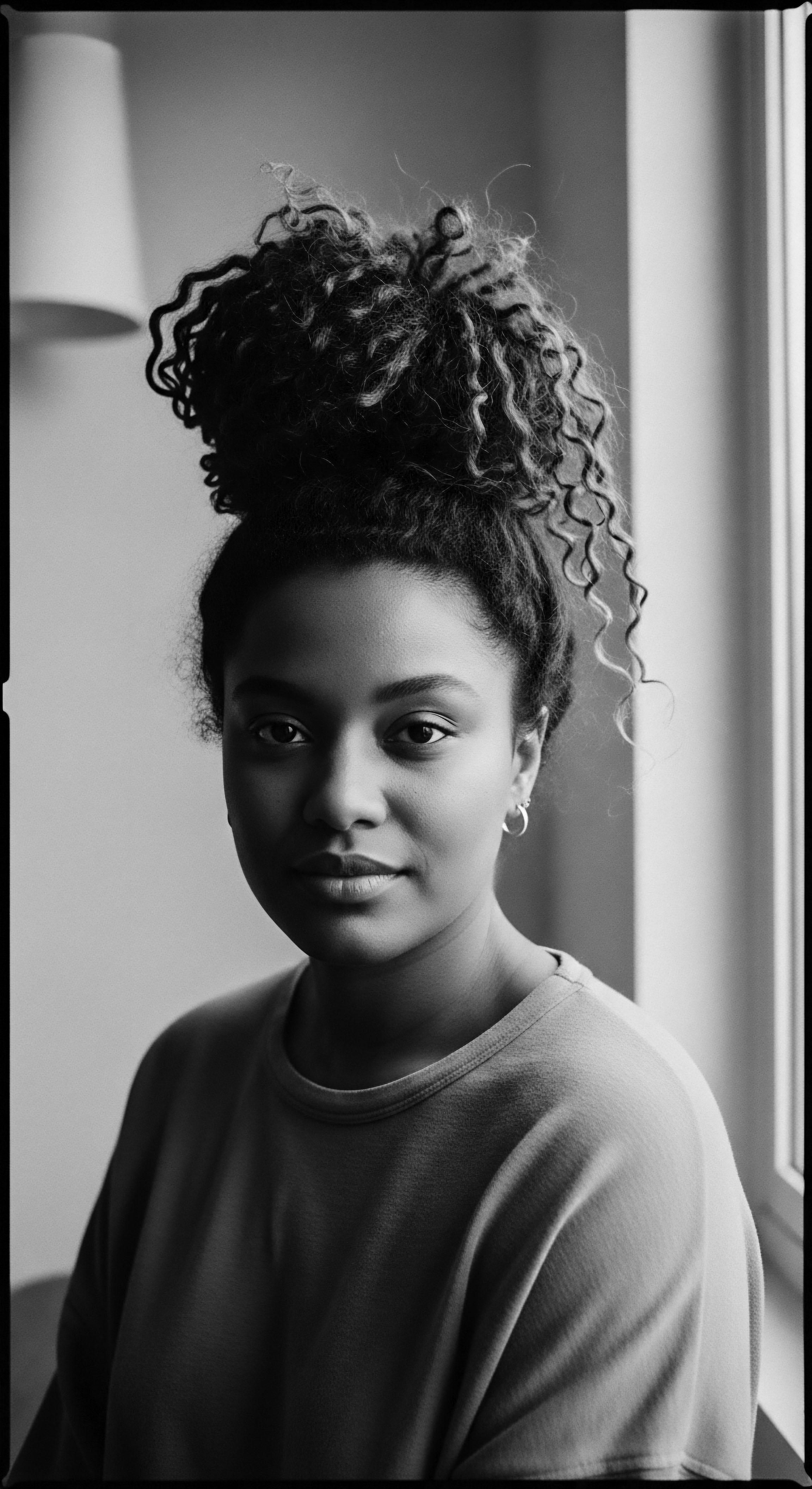
Cuticular Architecture and Water Dynamics
At an intermediate level, the meaning of High Porosity becomes a discourse on water dynamics within the hair fiber. The raised cuticles allow water molecules to rapidly penetrate the cortex, the inner bulk of the hair. While this initial absorption can be quite efficient, the challenge lies in the hair’s capacity for retention. The same open cuticles that invite moisture can just as quickly allow it to escape, leading to dryness and brittleness.
This phenomenon is particularly relevant for Afro-textured hair, which, despite often possessing a higher lipid content in its cuticle than Caucasian or Asian hair, tends to have lower intrinsic hydration levels and higher water diffusion rates. (Csuka et al. 2022). This seemingly paradoxical finding underscores the importance of the cuticular structure in moisture management.
Consider the environmental conditions in which many textured hair types evolved. Ancestral communities in West Africa, for example, lived in climates characterized by intense sun and variable humidity. The hair’s adaptation to these conditions meant developing mechanisms to protect the scalp from UV radiation while also managing moisture.
While high porosity might seem like a disadvantage in modern terms, it may have served a different function in an ancient context, perhaps facilitating rapid drying to prevent fungal growth in humid environments or allowing for quick rehydration after exposure to moisture. The understanding of high porosity, then, extends beyond mere biology to encompass an anthropological interpretation of hair’s natural evolution.
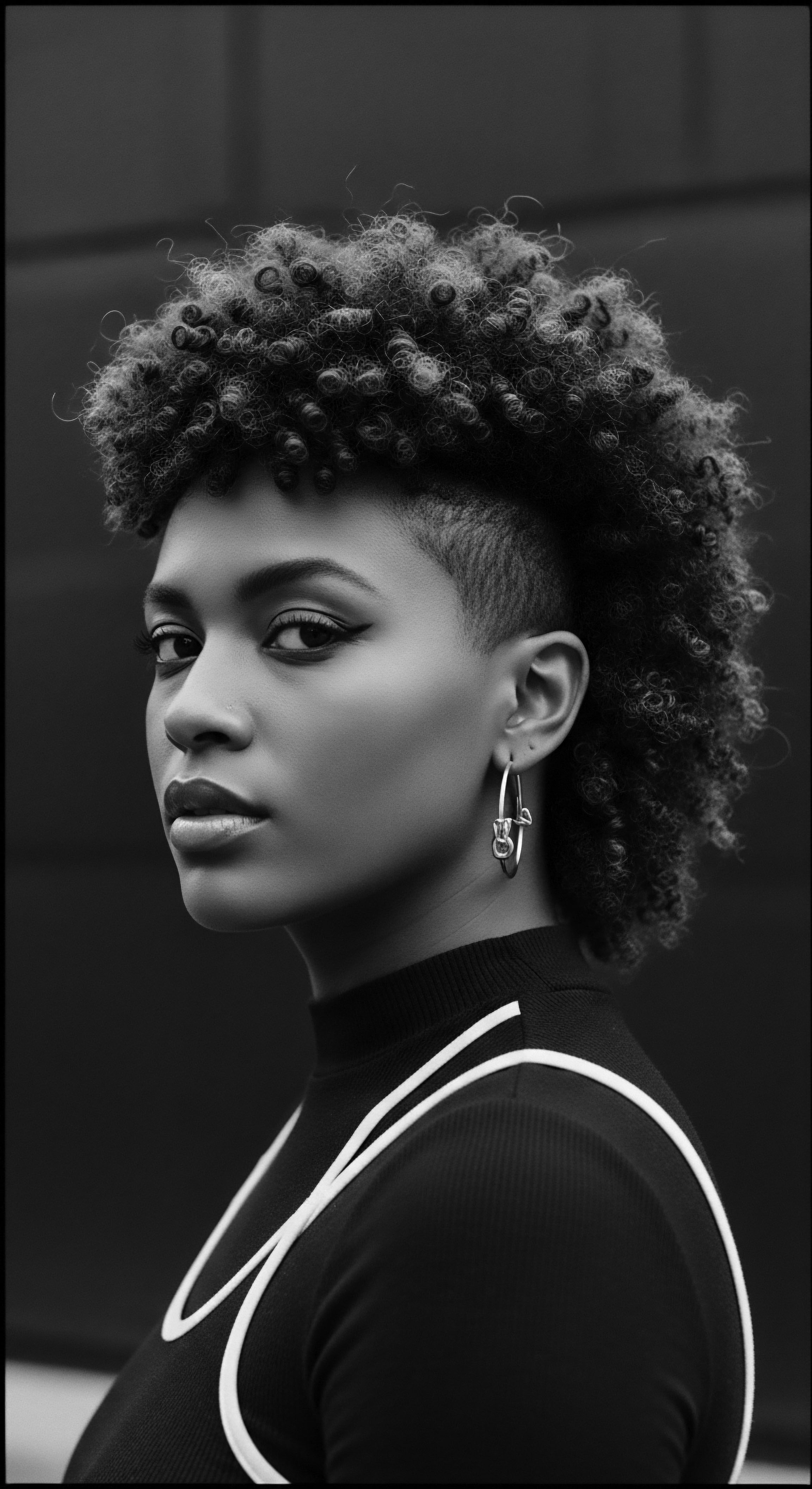
Ancestral Answers to Porosity’s Demands
Ancestral hair care practices often involved layering natural emollients and humectants to first attract moisture and then seal it within the hair shaft. This process, known implicitly through centuries of observation, addressed the very principles of high porosity. The use of traditional ingredients, often locally sourced, speaks to a sophisticated botanical knowledge deeply intertwined with community well-being.
The wisdom passed down through generations provides a deep reservoir of knowledge for caring for highly porous hair.
- Layering Techniques ❉ Ancestral practices often involved applying water or water-based infusions first, followed by rich, occlusive butters or oils. This created a seal, preventing rapid moisture evaporation.
- Natural Sealants ❉ Ingredients like Shea Butter, a staple in West African communities for over a thousand years, served as powerful sealants. Daphne Gallagher’s research indicates shea butter processing dates back to at least A.D. 100, far earlier than previously assumed (Gallagher, 2016). Its fatty acid composition provided a protective barrier.
- Communal Grooming ❉ The act of hair care was often a communal ritual, allowing for sustained attention to each strand, ensuring thorough application of treatments and fostering the deep penetration of nourishing elements.
The table below offers a glimpse into how some traditional practices for managing high porosity align with contemporary scientific understanding.
| Ancestral Practice Application of natural oils (e.g. Shea Butter, Coconut Oil) after water-based treatments. |
| Modern Porosity Principle Addressed Sealing the raised cuticles to prevent rapid moisture loss. |
| Hair Heritage Connection Rooted in agricultural abundance and communal knowledge of plant properties in West Africa. |
| Ancestral Practice Frequent use of braids and protective styles. |
| Modern Porosity Principle Addressed Minimizing manipulation and exposure, thus reducing cuticle friction and damage. |
| Hair Heritage Connection Styles embedded in cultural identity, social status, and preservation of hair health across the diaspora. |
| Ancestral Practice Gentle detangling with fingers or wide-toothed combs. |
| Modern Porosity Principle Addressed Preventing breakage and further lifting of cuticles, which is common in tightly coiled, highly porous hair. |
| Hair Heritage Connection Respect for the hair's fragility, recognizing its unique structural needs. |
| Ancestral Practice These practices underscore a timeless understanding of hair's needs, passed through generations. |
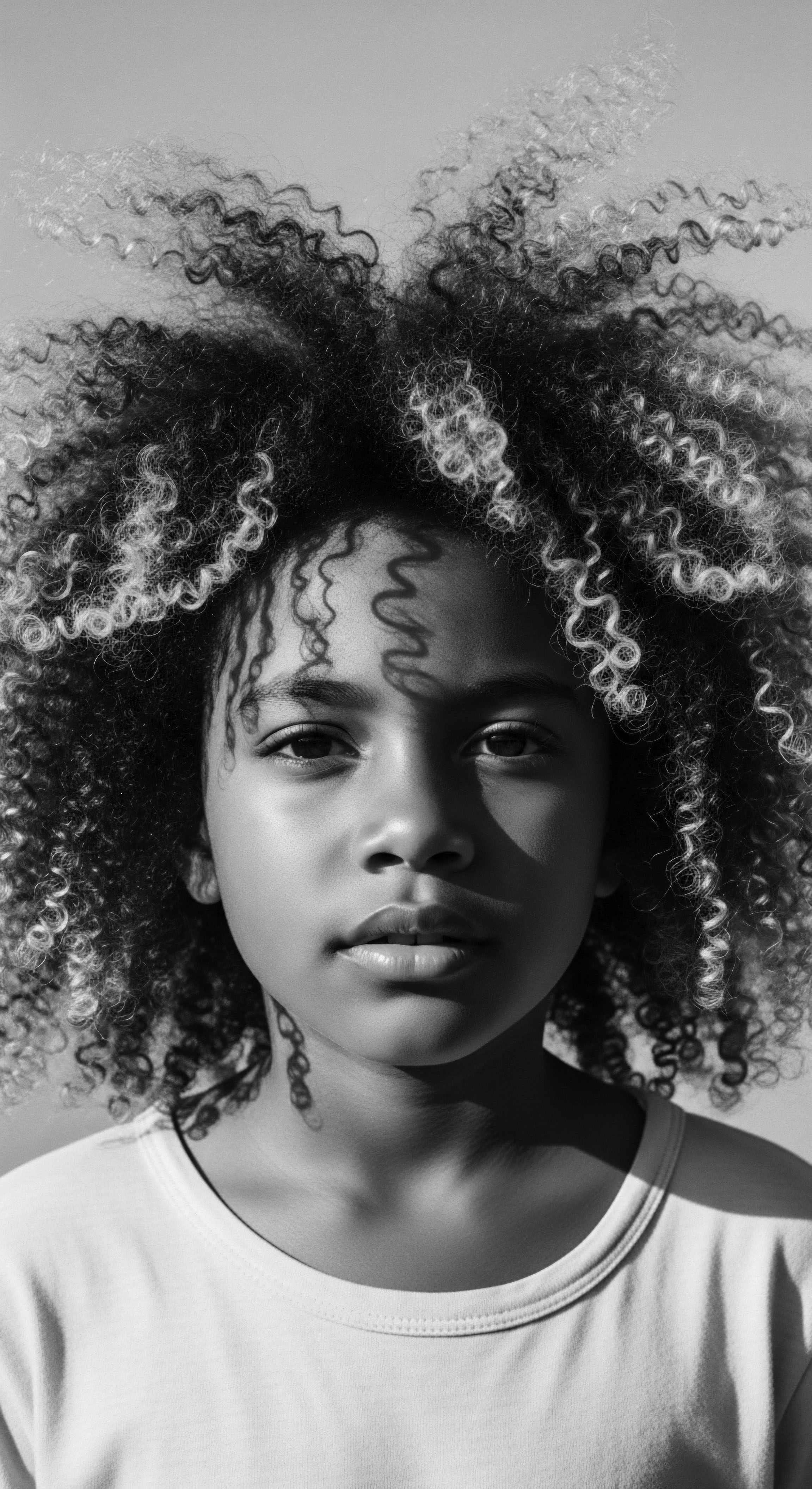
Academic
The academic elucidation of High Porosity transcends a mere observation of hair’s thirst, presenting itself as a complex interplay of biophysical attributes, genetic predispositions, and the epigenetic influences of environmental factors and cultural practices. Its precise meaning, within a scholarly discourse, designates a particular state of the hair shaft’s outermost layer, the cuticle, characterized by a compromised or disrupted integrity of its overlapping scales. This disruption, often manifesting as raised, chipped, or missing portions of the cuticle, creates a heightened permeability.
It allows for an accelerated rate of absorption and desorption of substances, including water, yet also critically impedes the ability of the hair fiber to maintain internal hydration over time. The implications of this structural reality are profound, particularly when considering the diverse hair phenotypes, especially those of African and mixed-race ancestries.
From a rigorously academic perspective, the concept of High Porosity is not merely a consumer term but a descriptor of the hair’s physical and chemical interactions with its milieu. This interaction is mediated by the surface topography of the hair, which in highly porous strands, exhibits an increased surface area for intermolecular exchanges. Research indicates that while Afro-textured hair possesses a higher overall lipid content than European or Asian hair, its unique helical structure and the specific arrangement of these lipids may contribute to its reduced ability to retain moisture and a higher diffusion coefficient for water. (Coderch et al.
2017; Bildstein et al. 2020) This finding suggests that the physiological meaning of high porosity in textured hair is not solely about damage, but can also be an inherent characteristic rooted in its evolutionary adaptation and distinct morphological properties.
High porosity, in textured hair, is a deeply inherited trait, reflecting both ancient adaptations and modern care requisites.
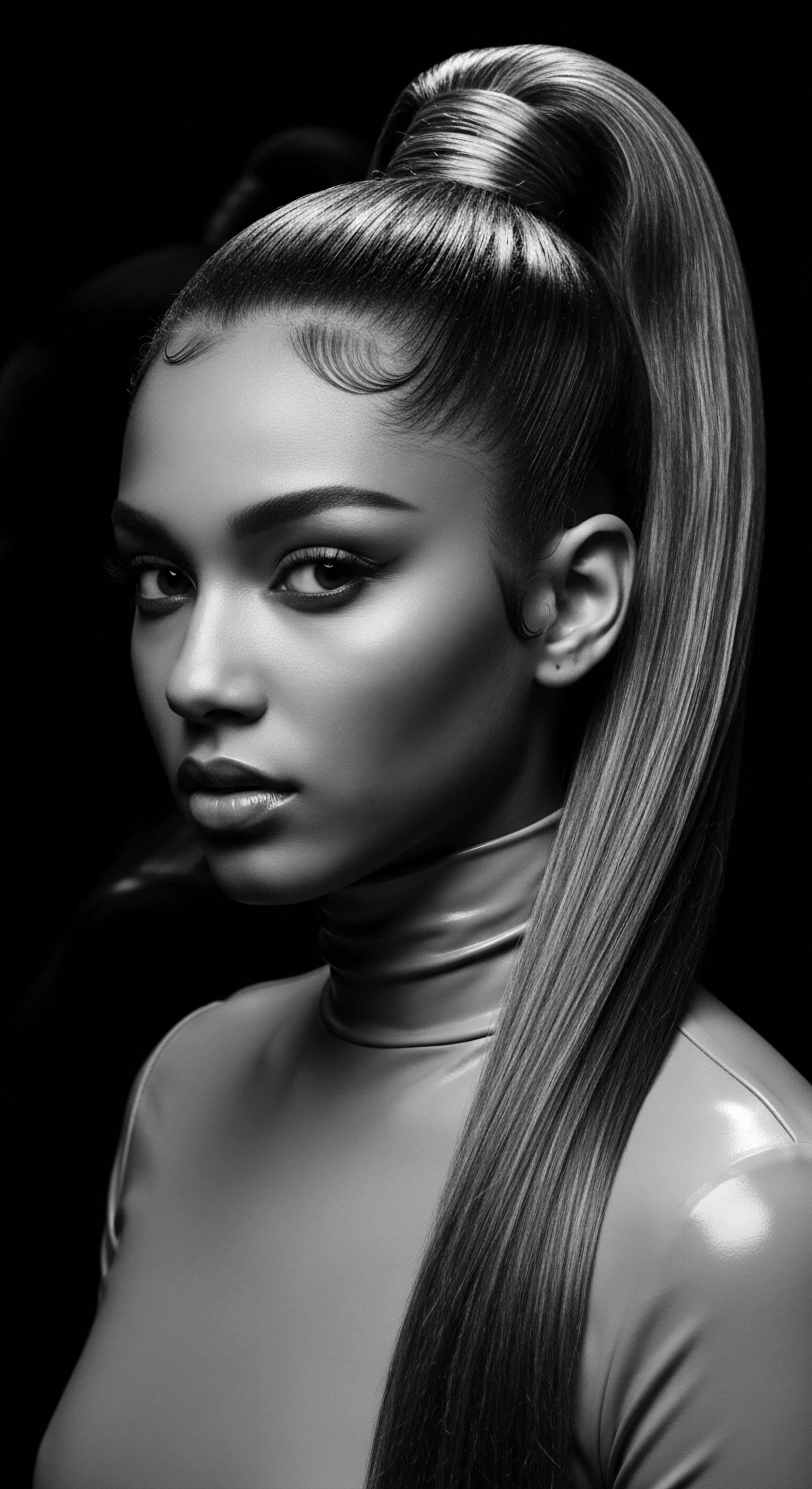
Biophysical Underpinnings of High Porosity in Textured Hair
The biophysical characteristics of highly porous hair, especially in the context of textured hair, are intricately linked to the shape of the hair follicle and the resulting hair fiber curvature. Afro-textured hair, with its elliptical cross-section and characteristic S-shaped follicle, exhibits remarkable structural variations. This unique morphology affects the uniform distribution of natural sebum along the hair shaft, contributing to a drier surface. When considering the precise meaning of high porosity, it becomes a descriptor for a hair fiber that experiences greater difficulty in preventing transepidermal water loss.
The external cuticle, when lifted, reduces the hydrophobic barrier, allowing water to escape even after initial absorption. This is a critical point, as it explains the persistent dryness often experienced by individuals with highly porous textured hair, despite their hair readily accepting moisture.
Moreover, studies examining the lipid composition and distribution within different ethnic hair types illuminate the complexity. While Afro-textured hair has the highest lipid content, estimated to be 2.5 to 3.2 times higher than European and Asian hair respectively, these lipids display a lower degree of ordering within the cuticle. This distinct lipid organization, rather than total lipid amount, plays a significant role in water permeability and moisture resistance. The designation of high porosity, then, becomes a statement about the functional efficiency of the cuticle as a moisture barrier, rather than simply its presence or absence.
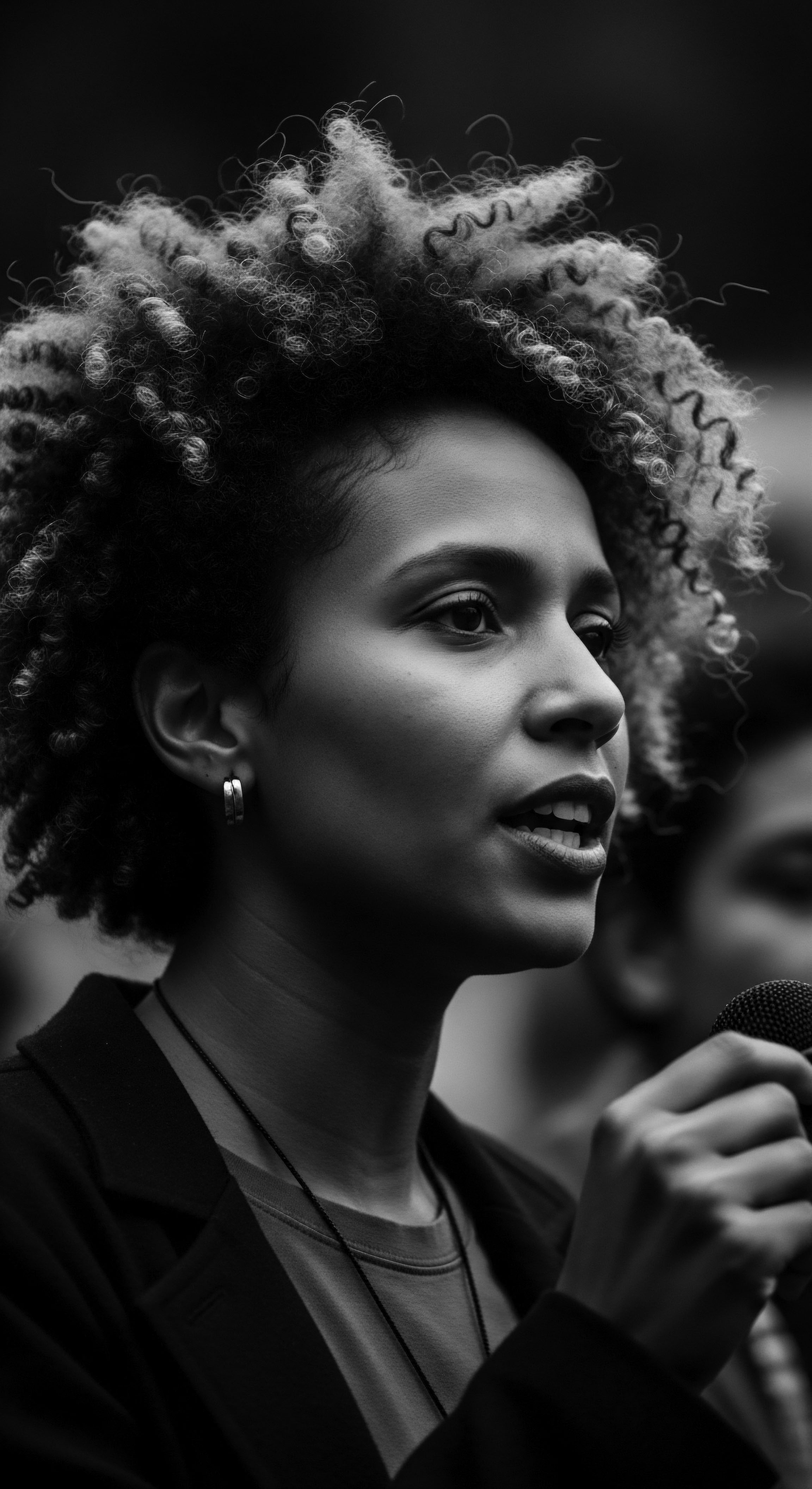
Interconnected Incidences ❉ High Porosity, Hair Health, and Ancestral Care Systems
The examination of high porosity at an academic level allows for a deeper appreciation of ancestral practices. Historically, many traditional hair care systems within African and Afro-diasporic communities implicitly understood the challenges of moisture retention in textured hair. These systems developed sophisticated methods, often centered around botanical resources, to seal the hair shaft and promote scalp health. The use of oils, butters, and various plant extracts in pre-colonial African societies, and their continued application throughout the diaspora, served as a foundational care regimen.
Consider the systematic application of unrefined Shea Butter (Vitellaria paradoxa) across West Africa for centuries. This practice, documented by ethnobotanical studies, reveals a profound understanding of emollients. Shea butter, rich in fatty acids and vitamins A and E, forms a protective barrier on the hair shaft, mitigating water loss. Its application directly counters the effects of high porosity by providing an external seal that compensates for the hair’s compromised internal moisture barrier.
This is not merely anecdotal; it represents a centuries-old, empirically derived solution to a biophysical challenge. The deep historical roots of shea butter’s use for hair and skin, dating back over 3,000 years, underscores its integral role in traditional wellness and beauty practices, even carried by figures like Cleopatra.
This ancestral wisdom also extended to styling practices. Techniques like braiding, which were not only aesthetic expressions but also powerful social and communicative tools in pre-colonial Africa, inadvertently minimized daily manipulation and exposure to environmental elements. By keeping the hair bundled and protected, these styles helped to reduce friction and further cuticle damage, thereby passively managing the effects of high porosity. A study found that in African American girls, the risk of traction alopecia nearly tripled with the use of cornrows, highlighting the need for proper technique even within traditional styles, yet also indicating the protective intent when done correctly.
(Rucker Wright et al. 2011) The continued practice of “greasing” the scalp and hair, while sometimes misunderstood in modern contexts, originated from a need to provide lubrication and a protective layer against dryness for tightly coiled hair that struggles with sebum distribution.
The long-term consequences of failing to address high porosity, particularly in textured hair, extend beyond mere cosmetic concerns. Chronic dryness leads to increased brittleness and breakage. The repeated mechanical stress of detangling or styling can further lift cuticles, creating a cyclical pattern of damage and moisture loss. This can contribute to various hair and scalp conditions, including different forms of alopecia.
Therefore, the comprehensive exploration of high porosity requires not only scientific investigation into its structural and chemical basis but also a deeply empathetic understanding of its historical and cultural management within communities that have long navigated its unique demands. The preservation of ancestral knowledge, often passed through oral traditions, represents a robust, time-tested approach to hair care that aligns remarkably with contemporary scientific understanding of hair porosity.
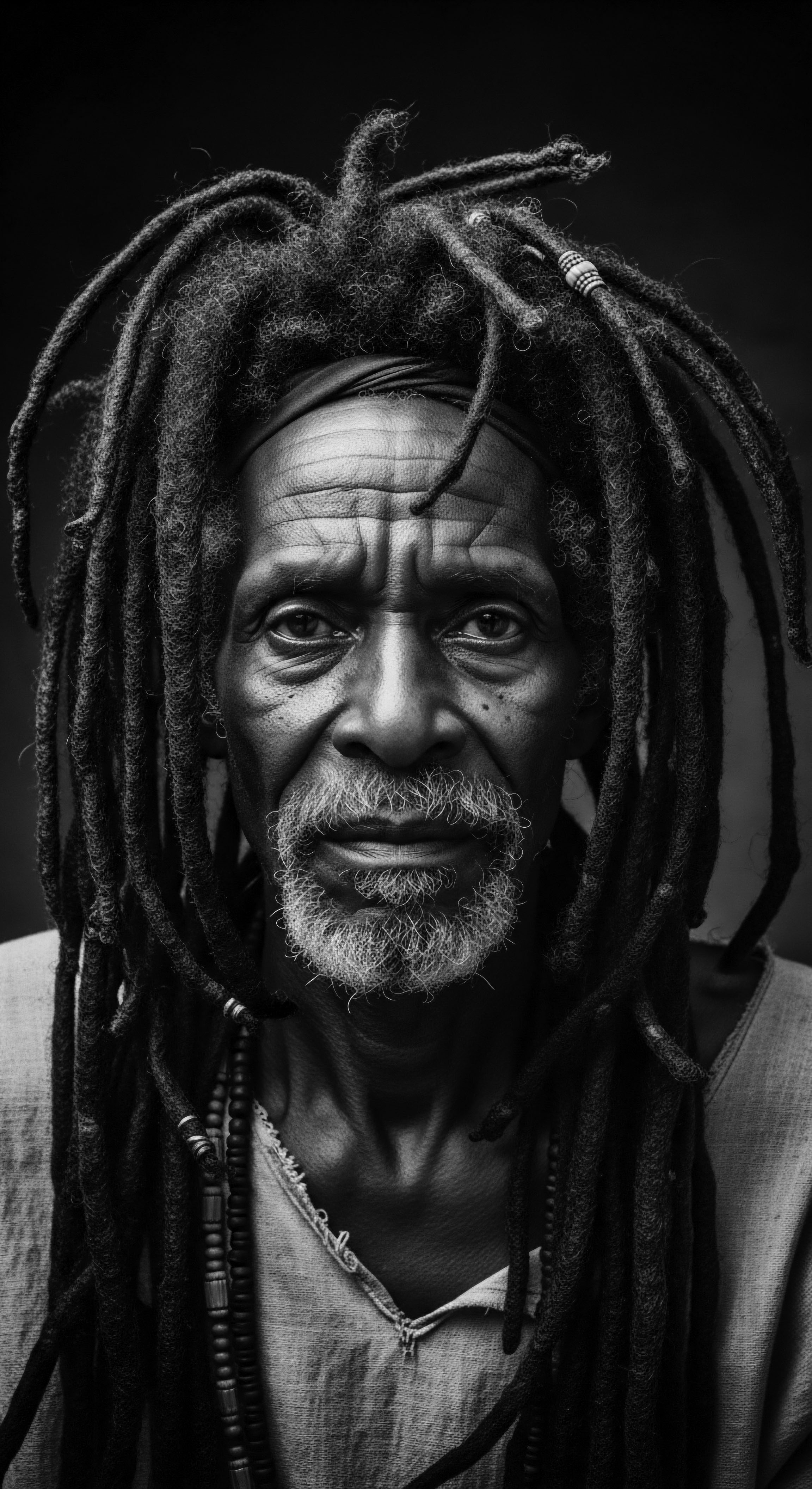
Reflection on the Heritage of High Porosity
The journey through the intricate world of High Porosity, particularly within the textured hair experience, is more than a scientific definition; it is a profound meditation on the enduring spirit of heritage. From the elemental biology of the raised cuticle, we trace a living thread back to the ancient hearths of Africa, where ingenuity and observation birthed a tender, communal approach to hair care. This profound understanding of hair, woven into the very fabric of identity and community, speaks to an ancestral wisdom that intuitively grasped what modern science now meticulously delineates. The echoes from the source remind us that the ‘meaning’ of High Porosity is deeply intertwined with the ancestral dance of hydration, protection, and preservation.
The tender thread of care, passed from hand to hand across generations, across oceans, through the diaspora, is a testament to resilience. It whispers stories of shea butter warmed between palms, of braiding sessions under star-lit skies, of formulations crafted from local flora to meet hair’s insatiable thirst. The ancestral responses to highly porous hair were not random acts but carefully observed and refined rituals that honored the hair’s unique capabilities and inherent requirements.
These practices, once dismissed by colonial gazes, are now increasingly affirmed by scientific inquiry, highlighting the profound continuity between ancient wisdom and contemporary understanding. The experience of high porosity, then, becomes a beautiful reminder of the ingenuity and deep connection to the natural world that characterized our forebears’ lives.
As we look forward, the unbound helix of textured hair continues to shape futures. Understanding High Porosity, through this heritage-focused lens, empowers us to continue the legacy of mindful care, drawing strength from both ancestral knowledge and contemporary science. It permits us to recognize that our hair, in all its unique expressions, carries the whispers of generations, a testament to beauty, adaptation, and an unbroken lineage of self-adornment and care. This reverence for the hair’s ancestral story transforms a scientific concept into a deeply personal and culturally resonant experience, inviting us to celebrate the nuanced needs of our textured crowns.

References
- Byrd, A. F. & Tharps, L. D. (2001). Hair Story ❉ Untangling the Roots of Black Hair in America. St. Martin’s Press.
- Curtin, P. D. (1969). The Atlantic Slave Trade ❉ A Census. University of Wisconsin Press.
- King, T. N. & Niabaly, B. (2013). Narratives of Black Women on Hair in the Workplace. Cornerstone ❉ A Collection of Scholarly and Creative Works for Minnesota State University, Mankato.
- Khumalo, N. P. et al. (2000). The morphology and tensile properties of South African human hair. Journal of Cosmetic Science, 51(3), 135-147.
- Patton, T. (2006). African American Hair ❉ From a Cultural and Historical Perspective. Sage Publications.
- Rosado, S. (2003). Black Hair ❉ A Cultural and Historical Examination. Journal of Black Studies, 34(1), 61-78.
- Rucker Wright, A. M. et al. (2011). Hair care practices and scalp disorders in African-American girls. Pediatric Dermatology, 28(2), 126-130.
- Voeks, R. A. (2007). The Ethnobotany of African Slaves in the New World. University of California Press.
